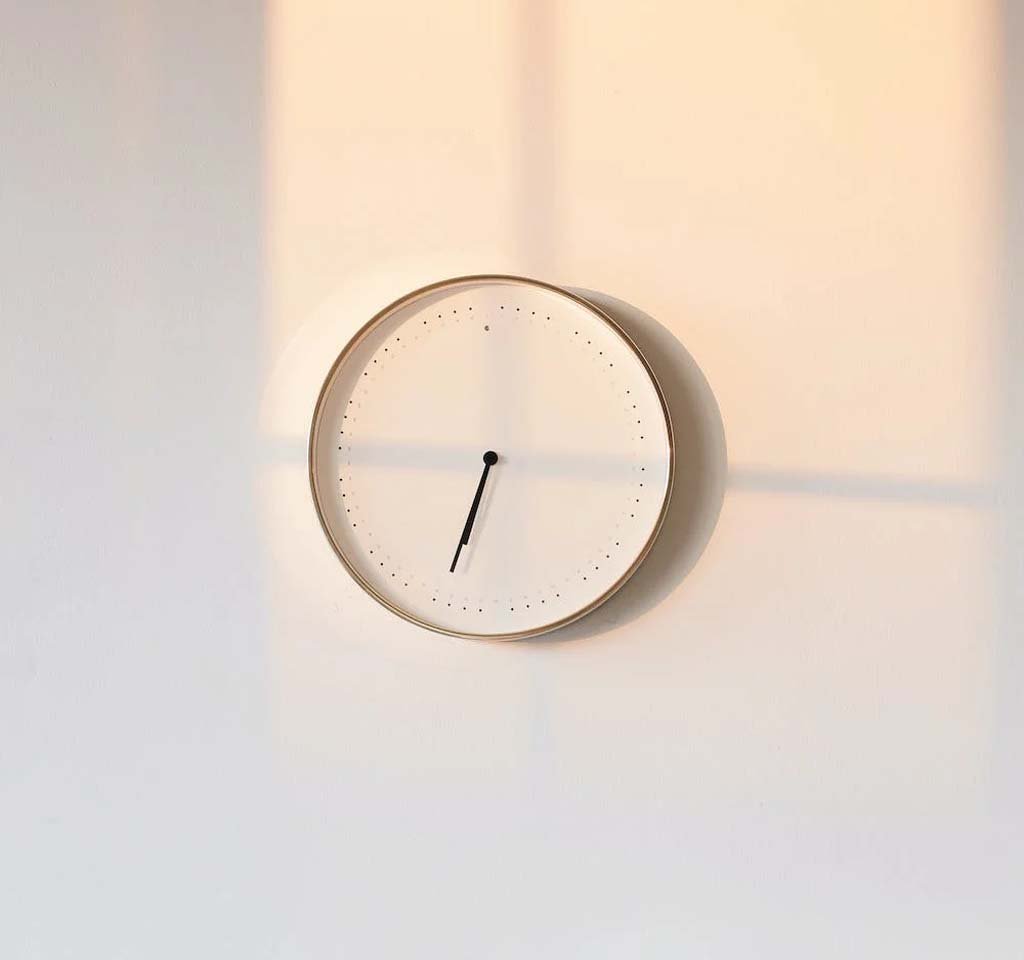The Timeless Appeal of Vintage Wall Art: A Look at Its Enduring Charm
January 31, 2024 | by Marvin Morar

Table of Contents
Introduction
Vintage wall art is a term used to describe artwork that was created in the past, typically between the 1920s and 1970s. It encompasses a wide range of styles, mediums, and subjects, from classic paintings and prints to retro posters and advertisements. What sets vintage wall art apart is its ability to evoke a sense of nostalgia and capture the essence of a bygone era.

The enduring appeal of vintage wall art lies in its ability to transport us back in time. Whether it’s a black-and-white photograph capturing the glamour of old Hollywood or a vibrant mid-century modern painting that embodies the spirit of post-war optimism, vintage wall art allows us to connect with history on a personal level. It serves as a visual reminder of our collective past and offers an escape from our fast-paced modern lives.
The History: From Ancient Times to Modern Day
Wall art has been around for centuries, dating back to ancient civilizations such as Egypt and Greece. In these early societies, murals were often used as decorative elements in temples and tombs, depicting scenes from mythology or everyday life.
Over time, wall art evolved alongside human civilization. During the Renaissance period in Europe, for example, frescoes adorned churches and palaces with religious themes painted by renowned artists like Michelangelo and Leonardo da Vinci.
In more recent history, the advent of printing technology allowed for mass production of artwork that could be easily displayed on walls. This led to an explosion in popularity during the late 19th century when posters became an affordable way for people to bring art into their homes.
Vintage wall art fits into this rich history by representing specific periods or styles within this broader timeline. It captures moments frozen in time – whether it’s Art Deco designs from the Roaring Twenties or psychedelic posters from the counterculture movement of the 1960s – and allows us to experience the aesthetics and cultural values of those eras.
The Evolution: How It Has Changed Over Time
Vintage wall art has undergone significant changes over time, reflecting shifts in artistic styles, mediums, and societal trends. From the intricate oil paintings of the Renaissance to the bold graphic designs of the mid-20th century, vintage wall art has adapted to changing tastes and preferences.
One notable aspect of vintage wall art is its diversity in styles and mediums. In earlier periods, artists primarily worked with traditional materials such as oil paints on canvas or frescoes on plaster walls. As technology advanced, new mediums emerged, including lithography for posters and screen printing for vibrant pop art pieces.
The subject matter depicted in vintage wall art also evolved over time. While religious themes dominated early periods, later eras saw a broader range of subjects emerge – from landscapes and still lifes to abstract compositions that challenged traditional notions of representation.
The Popularity: Why It Continues to Captivate Collectors and Art Enthusiasts
Vintage wall art continues to captivate collectors and art enthusiasts for several reasons. Firstly, it holds an emotional appeal by evoking nostalgia for a particular era or capturing memories associated with a specific time period. For example, someone who grew up during the 1950s might be drawn to vintage advertisements featuring iconic brands or images that remind them of their childhood.

Additionally, vintage wall art possesses an aesthetic charm that transcends time. Many pieces exhibit timeless qualities such as strong composition, vibrant colors or elegant simplicity that can enhance any space regardless of current trends.
Furthermore, there is a sense of authenticity inherent in vintage artwork that appeals to collectors seeking something unique amidst mass-produced contemporary pieces. Each vintage artwork carries its own history – whether it’s an original painting created by a renowned artist or a poster from an iconic event – adding depth and character to any collection.
The Beauty: Exploring Its Aesthetic Qualities
Vintage wall art possesses a unique beauty that sets it apart from other forms of artwork. It often showcases craftsmanship and attention to detail that is not as prevalent in modern mass-produced pieces.

One example of vintage wall art’s aesthetic appeal is the use of color. Mid-century modern pieces, for instance, often feature bold and vibrant hues that create a sense of energy and optimism. These colors can instantly transform a space, adding warmth and personality to any room.
Another aspect that contributes to the beauty of vintage wall art is its ability to capture a specific moment in time. Whether it’s an impressionistic landscape painting or a black-and-white photograph documenting historical events, vintage artwork allows us to experience the world through the eyes of artists who lived in different eras.
The choice of medium also plays a significant role in the aesthetic qualities of vintage wall art. From delicate watercolors with their soft washes and subtle textures to bold screen prints with their sharp lines and vibrant colors, each medium offers its own unique visual experience.
The Value: Understanding Its Monetary Worth
Determining the value of vintage wall art can be complex as it depends on various factors such as artist reputation, rarity, condition, provenance, and current market demand.
Artists who have achieved recognition during their lifetime or posthumously tend to command higher prices for their works. For example, paintings by renowned artists like Picasso or Warhol are highly sought after by collectors due to their historical significance and artistic contributions.
Rarity also plays an essential role in determining value. Limited edition prints or one-of-a-kind original artworks are generally more valuable than mass-produced posters or reproductions due to their scarcity.
Condition is another crucial factor affecting value; well-preserved artworks with minimal damage or restoration tend to be more desirable than those showing signs of wear or deterioration.
Provenance, or the documented history of an artwork’s ownership, can significantly impact its value. Pieces with a well-documented provenance that can be traced back to the artist or significant collectors often command higher prices due to their authenticity and historical significance.
Lastly, market demand plays a role in determining value. If there is high demand for a particular artist or style at a given time, prices may increase accordingly. However, market trends can fluctuate over time, so it’s essential to consider long-term value rather than short-term fluctuations.
The Rarity of Vintage Wall Art: Examining Its Limited Availability
Vintage wall art is often considered rare and hard to find due to several factors. Firstly, as time passes, many pieces are lost or damaged beyond repair. This natural attrition contributes to the scarcity of vintage artworks available on the market.
Additionally, vintage wall art was not always seen as valuable or collectible during its initial creation period. Many pieces were discarded or destroyed over time as tastes and trends changed.
Furthermore, vintage wall art often becomes more desirable as it ages and gains historical significance. As appreciation for certain artists or styles grows over time, collectors actively seek out these pieces which further reduces their availability in the market.
The importance of provenance and authenticity cannot be overstated when it comes to vintage wall art. With increasing demand for genuine artworks from reputable sources comes an increased risk of counterfeit reproductions entering the market. Collectors must exercise caution when purchasing vintage wall art and ensure they are buying from trusted sellers who can provide proper documentation regarding an artwork’s origin and history.
The Significance of Vintage Wall Art: Its Cultural and Historical Importance
Vintage wall art holds significant cultural and historical importance as it reflects the artistic movements and societal values prevalent during its creation period.
Art has always been influenced by cultural context – whether it’s political events shaping artistic responses or social changes inspiring new artistic movements. Vintage wall art serves as a visual record of these influences, allowing us to gain insights into the cultural and historical context in which it was created.
For example, mid-century modern artwork reflects the post-war optimism and desire for progress that characterized the 1950s and 1960s. These pieces often feature clean lines, geometric shapes, and vibrant colors that embody the spirit of innovation and technological advancement during this period.
Vintage wall art can also provide valuable historical documentation. Photographs capturing significant events or social movements offer a glimpse into moments that shaped our collective history. They serve as reminders of past struggles, triumphs, and milestones – helping us understand where we come from and how far we’ve come.
The Versatility of Vintage Wall Art: How It Can Enhance Any Space
One of the remarkable aspects of vintage wall art is its versatility in enhancing any space regardless of style or decor preferences.

Vintage wall art can act as a focal point in a room by adding visual interest or creating a conversation piece. A large-scale painting or an eye-catching poster can draw attention to itself while complementing other elements within the space.
Alternatively, vintage wall art can be used to create cohesion within a room by tying together different design elements. For example, if you have a predominantly neutral color scheme with minimal patterns in your living room, adding vintage artwork with pops of color or bold patterns can inject personality into the space without overwhelming it.
Another way to incorporate vintage wall art is by using it as an accent piece alongside contemporary artworks. The juxtaposition between old and new creates an interesting dynamic that adds depth and character to any interior design scheme.
The Sustainability of Vintage Wall Art: Its Eco-Friendly Appeal
In today’s world where sustainability is increasingly important, vintage wall art offers an eco-friendly alternative for home decor enthusiasts seeking environmentally conscious choices.
By choosing vintage pieces over newly produced artwork, you are reducing the demand for resources and energy required to create new materials. Vintage wall art repurposes existing pieces, giving them a new lease on life and preventing them from ending up in landfills.
Furthermore, vintage wall art can be seen as a form of recycling or upcycling. By incorporating these pieces into your home decor, you are participating in the circular economy by extending their lifespan and reducing waste.
Additionally, vintage wall art often features craftsmanship and quality that is not as prevalent in mass-produced contemporary pieces. By investing in vintage artwork, you are supporting traditional artistic techniques that may be at risk of being lost or forgotten.
The Accessibility: How Anyone Can Incorporate It Into Their Home Decor
Contrary to popular belief, vintage wall art is accessible to anyone regardless of budget or style preference. There are various ways to find affordable vintage pieces that suit your taste and complement your home decor.
One option is to explore local thrift stores or flea markets where you can often find hidden gems at reasonable prices. These places offer a treasure trove of unique artworks waiting to be discovered by savvy collectors.
Online marketplaces such as eBay or Etsy also provide a wide range of options for purchasing vintage wall art from sellers around the world. These platforms allow you to browse through an extensive selection without leaving the comfort of your own home.
Another approach is attending auctions or estate sales where you might stumble upon valuable artworks at competitive prices. While it requires more effort and knowledge about the market value of certain artists or styles, it can be an exciting way to build a collection while potentially finding rare finds.
When incorporating vintage wall art into your home decor, consider mixing different styles and mediums for added visual interest. Pairing abstract paintings with black-and-white photographs creates contrast while showcasing different artistic expressions within one space.
The Future of Vintage Wall Art: Predicting Its Continued Relevance
Vintage wall art’s timeless appeal suggests that it will continue to be popular in the future. As new generations seek connection with the past and appreciate the craftsmanship and authenticity of vintage pieces, demand for these artworks is likely to persist.
Furthermore, vintage wall art has proven its ability to adapt to changing tastes and trends over time. It has survived numerous artistic movements and cultural shifts, remaining relevant throughout history. As contemporary art continues to evolve, vintage wall art will continue to find its place as a cherished part of our visual culture.
Tips for Collecting: How to Build a Collection That Will Stand the Test of Time
Building a collection of vintage wall art requires careful consideration and research. Here are some practical tips for collectors:
1. Educate yourself: Familiarize yourself with different artists, styles, and periods within vintage wall art. This knowledge will help you make informed decisions when purchasing pieces for your collection.
2. Set a budget: Determine how much you are willing to invest in your collection and stick to it. Vintage wall art can range from affordable prints to high-end original paintings, so having a budget in mind will help guide your choices.
3. Research provenance: When considering purchasing an artwork, research its provenance – the documented history of ownership – as this can significantly impact its value and authenticity.
4. Condition matters: Examine artworks carefully before purchasing them; look out for any signs of damage or restoration that may affect their value or aesthetic appeal.
5. Buy from reputable sources: Purchase from trusted sellers who specialize in vintage artwork or have established reputations within the industry.
6. Mix styles and mediums: Don’t limit yourself to one particular style or medium; experiment with different types of vintage wall art that resonate with you personally while adding diversity to your collection.
Vintage wall art holds an enduring charm that captivates collectors and enthusiasts alike due to its ability to evoke nostalgia while offering timeless beauty. Its rich history, diverse styles, and mediums, along with its cultural and historical significance, make it a valuable addition to any home decor.
The accessibility of vintage wall art ensures that anyone can incorporate it into their living spaces regardless of budget or style preference. Its sustainability and eco-friendly appeal further contribute to its appeal in today’s world.
Conclusion: The Timeless Appeal of Vintage Wall Art and Its Enduring Charm

As we look towards the future, vintage wall art is likely to remain relevant as new generations discover its timeless qualities. By following practical tips for collecting vintage wall art, you can build a collection that will stand the test of time while bringing joy and aesthetic pleasure for years to come.
RELATED POSTS
View all



